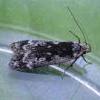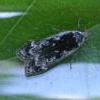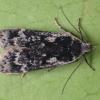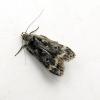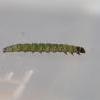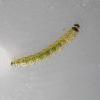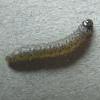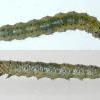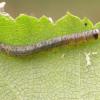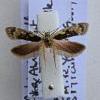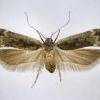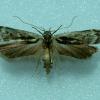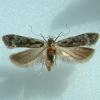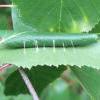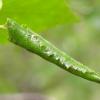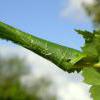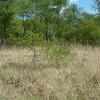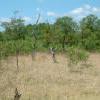35.012 Anacampsis blattariella (Hübner, 1796)
Status and Distribution
Local, occasionally locally common, in England, although apparently absent from the south-west and much of northern England. Very local in Wales, with only a few records from the east and south of that country. Noted once in Scotland in the south-east border region. There are no records from Ireland, Northern Ireland, Isle of Man and the Channel Islands.
A. blattariella was first recognised as a distinct species in Britain in 1947 having been split from A. populella a few years previously on the continent. Documented records of non-bred A. populella prior to this period could refer to either species unless subsequently dissected.
Provisional map
Set Specimens
Habitat
Finding the Moth
Larva: rolls the leaves. The larva should be checked to ensure it has the pale green body and black head to distinguish it from other insects that roll the leaves. See Caloptilia betulicola and C. populetorum for example http://www.leafmines.co.uk/html/species_list.htm and it should be noted that Epinotia solandriana (Tortricidae) feeds in a similar fashion but the larva has a yellowish-brown head mottled with dark brown as opposed to the black head of A. blattariella.
Adult: can be found resting on tree trunks, disturbed from the birch branches and readily comes to light.
Similar Species
Both Anacampsis blattariella and A. populella are variable species with overlap in the forewing markings and colour. A transverse pale fascia at three-quarters (if visible) often has a strong zig-zag style in the costal half in A. blattariella (more curved in A. populella) but again there is variation in this. Information received from some County Moth Recorders and experienced moth recorders suggest those moths at the extremes (dull greyish fuscous or strongly black and white) are often identifiable from the forewing markings alone but that intermediates and those which have become worn will not be identifiable without dissection, unless bred. Their comments are based on experience of the habitat and moths in their areas where both breeding and dissection have been carried allowing familiarity with the 'look' of their local moths to be applied. It is therefore suggested that any caught specimen is retained for potential dissection (see more below).
Although adults found resting on the trunks of willows, poplars and aspen are likely to be A. populella care should always be taken as moths do wander and alder can be found where some willow species occur.
The best way to become familiar with this pair at a site is to breed them through from known foodplants whilst also retaining a few trap-caught specimens for dissection. This will demonstrate if both species are present and develop familiarity with the range of markings present in your locality.
Examination of the photographs on this and other websites which specifically show dissected or bred specimens of both species is strongly recommended, as these illustrate some of the pitfalls in their identification. Conversely it is advisable to adopt a cautious approach if attempting to identify specimens from websites or on-line postings where the specimens have not been critically examined or bred.
One website with a good range of photographs of dissected or bred A. blattariella is the Dissection Group - http://mothdissection.co.uk/species.php?Tx=Anacampsis_blattariella
A. blattariella was first recorded in Britain in 1947 so documented records of non-bred A. populella prior to this period could refer to either species unless subsequently dissected.
To potentially further complicate matters, it is mentioned in Emmet and Langmaid, 2002 The Moths of Great Britain and Ireland Vol. 4 (2), that although these two closely related species are considered to be clearly separated on the continent, the separation may not be so complete in Britain - 'Specimens reared by D A B Macnicol from larvae in rolled Betula leaves from Surrey in 1952 are large, weakly marked and have female genitalia approximating more to A. populella than to A. blattariella.' It would be worthwhile for photographs of these dissections to be taken and displayed for comparison.
Single brooded from July to early September.

